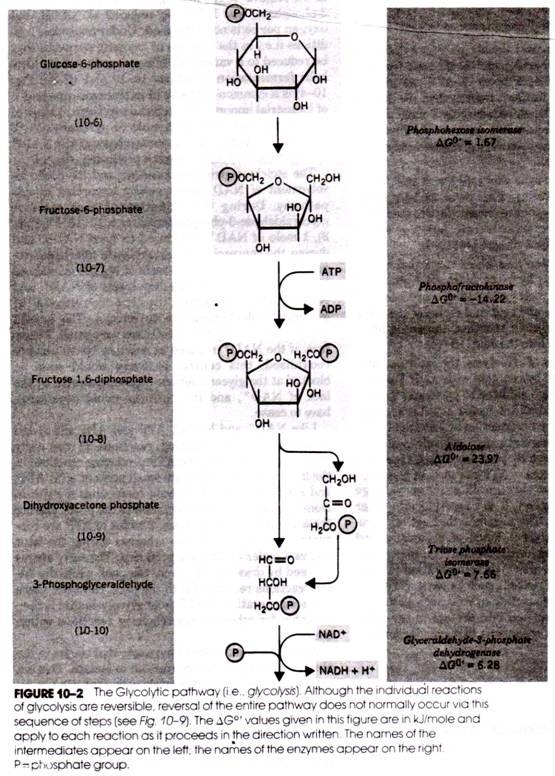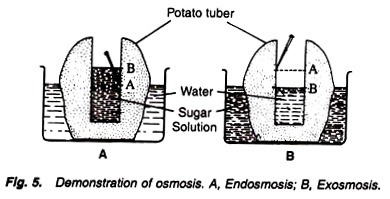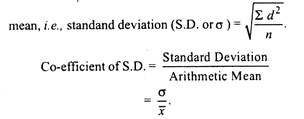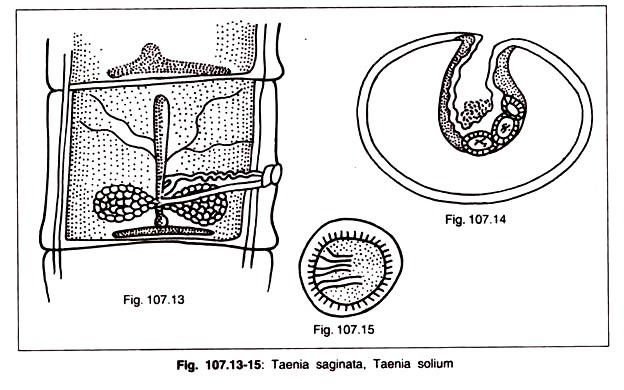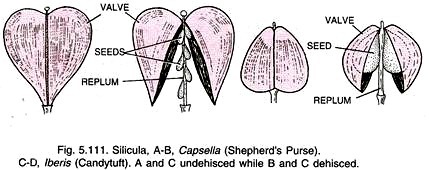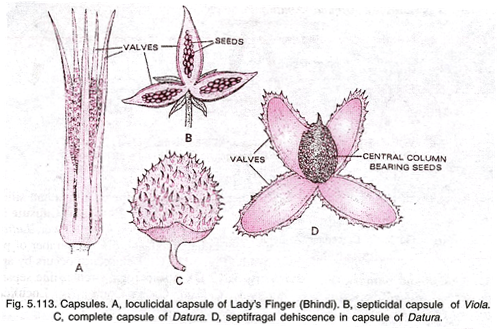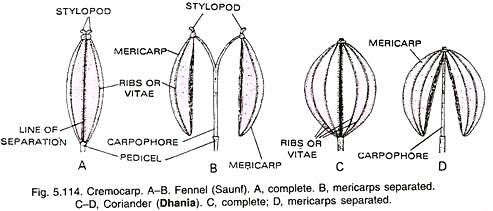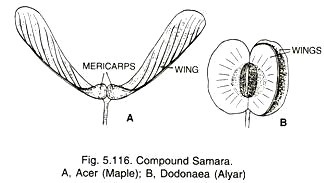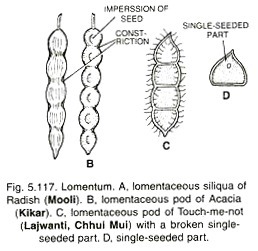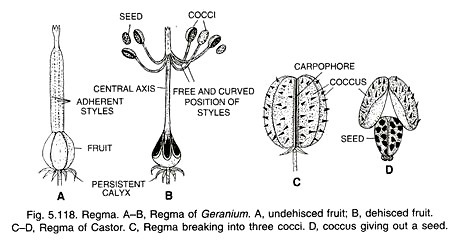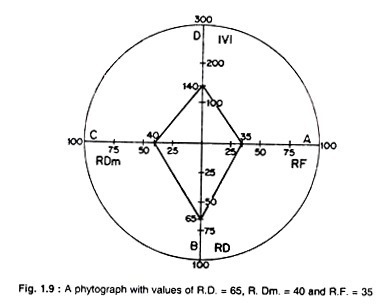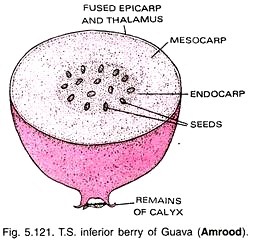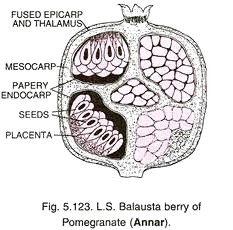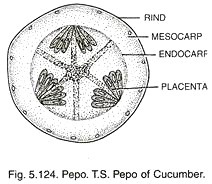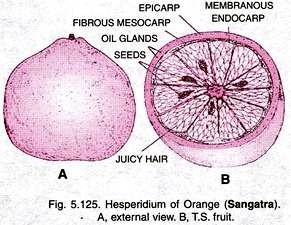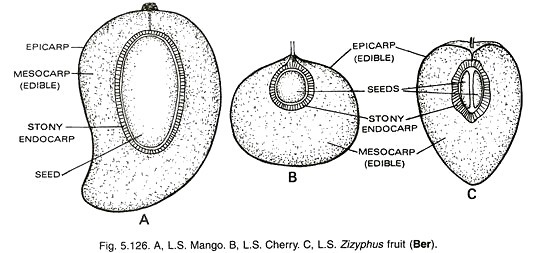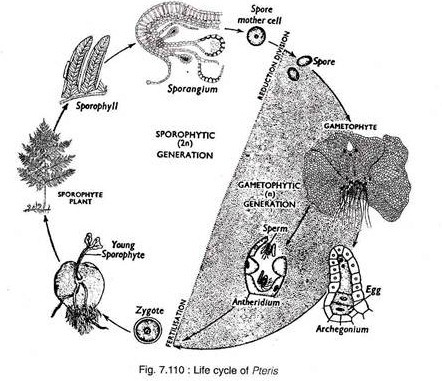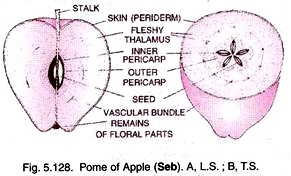In this essay we will discuss about:- 1. Essay on the Definition of Fruits 2. Essay on the Types of Fruits 3. Essay on the Importance of Fruits
Definition of Fruit:
True fruit or eucarp is a ripened ovary which develops under the influence of ripening ovules and is meant for protecting them. It consists of a pericarp formed from the wall of ovary and seeds formed from ovules.
A fruit in which other floral parts (e.g., thalamus, base of sepals, petals, etc.) fuse with the pericarp is called false fruit, accessory fruit or pseudocarp (e.g., Apple, Mulberry, and Strawberry). A fruit formed without fertilization, i.e., a seedless fruit is called parthenocarp (e.g., Banana).
Types of Fruits:
Fruits are of three main types— simple (formed from a flower having a single pistil), aggregate (from a flower having polycarpellary apocarpous gynaecium) and composite (from a whole inflorescence).
Some of the important types of fruit are listed below:
1. Simple Fruit:
A simple fruit develops from the single simple or compound ovary of a flower. It can be dry (pericarp dry) or succulent (pericarp fleshy). Dry fruits are of further three types— achenial (single seeded indehiscent), capsular (many seeded dehiscent) and schizocarpic (many seeded breaking up into single seeded parts).
I. Achenial Fruits:
They are single seeded, indehiscent, dry and simple fruits. The achenial fruits are of five kinds.
i. Typical Achene:
The thin dry pericarp is free from seed except at one point. The fruit develops from a monocarpellary pistil having superior unilocular and unioveuled ovary, e.g Four O’clock (Mirabilis jalapa), Boerhaavia. It is more common in aggregate fruit (Ranunculus, Clematis, etc.)
ii. Caryopsis or Grain:
The thin dry pericarp is completely fused with the seed coat or testa. The fruit develops from a monocarpellary pistil with superior, unilocular and uniovuled ovary, e.g., Maize, Wheat, Oat, Rice.
iii. Cypsela (Fig. 5.105):
Cypsela is also called inferior, false or pseudocaipic achene. The thin fruit wall (developed from pericarp and thalamus) is attached to the seed at one point but the fruit develops from an inferior, unilocular and uniovuled ovary, e.g., Sunflower Mangold. Some cypselas envelop pappus for dispersal, e.g., Sonchus, Taraxacum (Dandelion).
iv. Nut (Fig. 5.106):
In this single-seeded indehiscent and dry fruit, the fruit wall is hard, woody or rarely leathery. In Cashewnut (Anacardium occidentale), the kidney-shaped fruit (formed from monocarpellary superior ovary) lies above a fleshy thalamus.
The hard pericarp encloses the edible seed having two large cotyledons. In Oak the hard brown pericarp is smooth. It is surrounded at the base by a cupule of bracts (The fruit develops from a tricarpellary syncarpous and inferior ovary in which only one ovule reaches maturity).
In litchi (Litchi chinensis-Nephelium litchi) the brown реriсаrp is somewhat spiny, hard but brittle. It encloses single large and brown seed (fruit develops from a tricarpellary, syncarpous, trilocular ovary in which one ovule of one chamber reaches maturity).
In between the seed and the pericarp is found a white, transluscent, fleshy and edible structure called aril. It is considered to be additional integument of the ovule which develops from the funiculus (stalk) of the ovule.
Walnut (Juglans regia), previously considered to be a drupe, has a husk like exocarp (formed of thalamus, perianth, and bract), a woody pericarp and a single seed having convoluted edible cotyledons (fruit is formed from a bicarpellary, unilocular and umovuled inferior ovary).
v. Simple Samara (Fig. 5.107):
The pericarp of single-seeded indehiscent dry fruit bears membranous outgrowths called wings for wind dispersel, e.g., Ulmus (Elm), Holoptelia (Indian Elm). The term samaroid is used for fruits having wings formed of other structures, e.g., sepals in Shorea (sal).
II. Capsular Fruits:
They are many-seeded, dry, simple and dehiscent fruits in which the pericarp splits open to expose the seeds.
The fruits are of five subtypes:
i. Legume or Pod (Fig. 5.108):
The fruit is formed from superior unilocular ovary of a monocarpellary pistil having marginal placentation. The mature fruit dehisces by both dorsal and ventral sutures, e.g., members of family Leguminosae (Pea, Abrus).
ii. Follicle (Fig. 5.109):
It is similar to legume but dehisces by only one suture, generally ventral, e.g., Larkspur.
iii. Siliqua (Fig. 5.110):
It develops from a bicarpellary superior and bilocular ovary having parietal placentation and a false septum called replum. The fruit is elongated and cylindrical. It dehisces by two valves starting from base upwards to expose the replum bearing the seeds, e.g., Mustard.
iv. Silicula (Fig. 5.111):
It is a few- seeded shortened and flattened siliqua, e.g., Shepherd’s Purse (Capsella), Candytuft (Iberis).
v. Capsule:
It includes capsular fruits other than legume, follicle, siliqua and silicula.
Depending upon the mode of dehiscence, it is of several kinds:
(i) Porocidal Capsule (Fig. 5.112 A-В):
The capsule dehisces by means of pores, e.g., Poppy, Dog Flower, Luffa. In Poppy (Papaver species) the fruit has a persistent radiate stigmatic disc. A number of pores develop below the disc.
(ii) Denticidal Capsule (Fig. 5.112 C):
Dehiscence occurs by apical teeth, e.g., Pink.
(iii) Pyxidium (= Pyxis, Fig. 5.112 D):
A transverse circular line separates a lid so as to expose the seeds, e.g., Portulaca, Celosia (Cock’s Comb).
(iv) Loculicidal Capsule (Fig. 5.113 A):
The fruit dehisces by longitudinal slits that appear along the dorsal sutures of the compound ovary so as to open into the loculi, e.g., Cotton (Gossypium species), Lady’s Finger (Okra, Abelmoschus esculentus).
(v) Septicidal Capsule (Fig. 5.113 B):
Longitudinal slits appear along the middle of septa and the placentae separate along the line of union, e.g., Pansy (Viola), Linseed (Linum).
(vi) Septifragal Capsule (Fig. 5.113 C- D):
The dehiscence may occur by loculicidal, septicidal or irregular methods but the exposed seeds are left attached to a central axile column, e.g., Datura.
III. Schizocarpic Fruits:
They are many-seeded dry and simple fruits which break up into single-seeded parts. The indehiscent single-seeded parts are called mericarps while the dehiscent ones are termed as cocci (singular coccus). Schizocarpic fruits are of five subtypes.
i. Cremocarp (Fig. 5.114):
It develops from an inferior, bilocular ovary of a bicarpellary syncarpous pistil with persistent stylopod or stylopodium. The mature fruit breaks up into two mericarps which may remain attached for some time to a central axis or carpophore by means of stylopod, e.g., Fennel, Coriander (family Apiaceae or Umbelliferae).
ii. Carcerulus (Fig. 5.115):
Carcerulus or carcerule develops from a superior bi- to multilocular ovary. It breaks up at maturity into single seeded indehiscent parts or mericarps, e.g., Garden Nasturtium, Althaea, Abutilon.
iii. Compound Samara (Fig. 5.116):
The fruit is winged. It splits up at maturity into single seeded winged mericarps, e.g., double samara of Acer (Maple) and triple samara of Dodonaea (vern. Alyar).
iv. Lomentum (Fig. 5.117):
The fruit is constricted in between the seeds.
It is either indehiscent or breaks up into single-seeded parts. Lomentum is of two types:
(i) Lomentaceous Sdiqua (Fig. 5.117 A):
The fruit is internally like a siliqua but is constricted in between the seeds, e.g., indehiscent fruit of Radish.
(ii) Lomentaceous Pod (Fig. 5.117 B-D):
The constricted fruit develops from a superior monocarpellary gynaecium like a typical legume, e.g., Groundnut, Acacia, and Mimosa. The lomentaceous pod of Groundnut is indehiscent while that of Acacia breaks up into cocci.
v. Regma (Fig. 5.118):
The fruit breaks up into single-seeded dehiscent parts called cocci. The cocci remain attached to a central axis or carpophore for some time, e.g., Castor, Geranium. The regma of Castor is tubercled. It breaks up into three cocci. The regma of Geranium splits up into 5 cocci along with the separation of hygroscopic styles. The hygroscopic styles shake the cocci for the liberation of seeds.
Simple Succulent Fruits:
In these simple fruits the pericarp and its associated parts become fleshy. Simple succulent fruits are of three types— berries, drupes and pomes.
i. Berries or Baccate Fruits:
The fleshy pericarp is differentiated into three parts— outermost skin or epicarp, middle mesocarp and innermost endocarp. The endocarp is either pulpy (e.g., Grape, Fig. 5.119), Brinjal, Red Pepper, Guava, Banana, Tomato (Fig. 5.120) or papery (e.g., Date). The fruit is single-seeded in Date but many seeded in others.
The seeds become free from placenta and come to lie freely in the pulpy endocarp. In superior or true berries (derived from superior ovaries (Figs. 5.119-120) usually all the three layers of the fleshy pericarp are edible. The berries derived from inferior ovaries are called false berries. In their case the epicarp is fused with the thalamus to form the skin, also called exocarp. Remains of calyx appear as a crown at the tip.
In Grape (Vitis vinifera, Fig. 5.119) the fruit is a true or superior berry which is derived from bicarpellary syncarpous and bilocular ovary.
Here, all parts of fruit (epicarp, mesocarp and endocarp) including the placentae but excluding the seeds, are edible. In some varieties, the berry is seedless and hence parthenocarpic. The outer thin membranous skin is epicarp. Mesocarp, endocarp and placentae are succulent or pulpy.
The fruit of Tomato (Lycopersicon lycopersicum = Lycopersicum esculentum, Fig. 5.120) is a smooth or grooved nearly globular superior or true berry. It is derived from a bicarpellary, syncarpous bi- to tetra-locular ovary with swollen placentae.
All parts of the fruit, except the small seeds, are edible. The berry consists of a membranous skin represented by epicarp. Mesocarp is the middle fleshy part. Endocarp, septa and placentae are pulpy.
In Date (Phoenix dactylifera, vern. Khajoor) the fruit is an elongated oblong true or superior berry with wrinkled or smooth surface. It is single seeded. Epicarp and mesocarp are edible. Epicarp is the outermost membranous skin. Mesocarp is fleshy and thick. Endocarp is papery. It surrounds the grooved seed.
Guava (Psidium guajava, vern. Amrood, Fig. 5.121) is a rounded inferior false or pseudocarpic berry which bears persistent calyx at the free end. The fruit is formed from a pentacarpellary, syncarpous, pentalocular and inferior ovary. Outer skin is derived from fused epicarp and thalamus. Mesocarp is fleshy. Endocarp and placentae are pulpy. All parts of the fruit except seeds are edible.
Banana (Musa paradisiaca, Fig. 5.122) has an inferior (false, pseudocarpic) and parthenocarpic berry. It is elongated cylindrical or angular fruit with a conical free end bearing persistent calyx. The berry develops from a tricarpellary, syncarpous and trilocular inferior ovary.
The fruit has a thick skin which is fibrous on the inner side. The skin represents the fused thalamus and epicarp. Inner to the skin is the fleshy mesocarp. Endocarp lies in the central narrow region. It contains many unripe seeds or unfertilized ovules which appear as dark spots. Both mesocarp and endocarp are edible.
Five types of special berries occur in nature:
(i) Balausta (Fig. 5.123):
It is a special type of false or pseudocarpic berry in which the syncarpous pistil consists of two rows of fused carpels, one above the other. The whole fruit is covered by a hard rind made up of exocarp and part of mesocarp. Mesocarp also forms plate-like infolding’s.
The endocarp is papery and covers the individual groups of seeds. The seeds possess bright red juicy testa (embryo is protected by horny tegmen), e.g., Pomegranate (Punica granatum).
(ii) Pepo (Fig. 5.124):
It is a special type of false berry in which the rind or exocarp does not separate from mesocarp. Similarly, the seeds do not separate from the placentae which are incurved to form septa, e.g., Gourd, Pumpkin, Cucumber, Melon, and Water Melon. Rind may or may not be edible. Normally endocarp, mesocarp as well as placentae (exception Melon) are edible. In Water Melon only endocarp and placentae become juicy.
(iii) Hesperidium (Fig. 5.125):
It is a special type of superior berry which is many chambered, with each chamber covered by its own papery endocarp. It is derived from a polycarpellary syncarpous superior multilocular ovary with axile placentation.
Each chamber or loculus of the fruit encloses one or more seeds and a number of edible juicy placental hair. All the chambers or loculi are covered by a common white fibrous mesocarp and a thick glandular skin or epicarp. Examples are found in Citrus plants like Orange and Lemon.
ii. Drupes or Stone Fruits:
The fruit wall or рericarp is differentiated into three layers— ерicarp, mesocarp and endocarp. The еndocarp is stony. It encloses one, or rarely more (two in Zizyphus, three in Borassus) seeds. In drupes derived from superior ovaries, the еpicarp forms the outer skin. It may (e.g., Peach, Plum, Cherry, Zizyphus, Fig. 5.126 B-C) or may not (e.g., Mango, Fig. 5.126 A) be edible.
The mesocarp is pulpy and edible in most of the drupes. In Almond none of the реricarp layers is edible. The velvetty еpicarp and the tough mesocarp are removed before marketing. The marketed produce contains a stony endocarp that encloses one or rarely two seeds having edible cotyledons.
Coconut (Fig. 5.127) has a membranous epicarp, fibrous mesocarp (hence fibrous drupe) and a stony endocarp that bears three dark eye spots representing the remains of the styles. The fibrous mesocarp yields coir. The endocarp encloses a single seed with brown testa, white oily endosperm, a small embryo and a watery fluid called “milk of coconut”.
iii. Pome (Fig. 5.128):
It is a false or accessory simple succulent fruit that develops from an inferior compound ovary, e.g., Apple, Pear. The remains of sepals and stamens occur at the free end. The pericarp is not differentiated into epicarp, mesocarp or endocarp. The outer fleshy part of the fruit is thalamus. Fleshy thalamus contains a ring of vascular bundles.
The pericarp is represented by a central cartilaginous area which may show differentiation into outer and inner parts. The inner pericarp or core is divisible into five chambers containing the seeds. The chambers represent the loculi of the inferior pentacarpellary syncarpous ovary.
2. Aggregate Fruits:
An aggregate fruit or etaerio is a group of simple fruitlets that develop from the free ovaries of a single flower.
The important aggregate fruits are as follows:
i. Etaerio of Achene’s (Fig. 5.129):
It is an aggregate fruit in which the individual fruitlets are achene’s (dry single-seeded indehiscent fruitlets in each of which the seed is attached to the dry pericarp at one point) e.g., Buttercup (Ranunculus), Clematis. The fruitlets of Clematis possess persistent hairy styles for wind dispersal.
In Rose the aggregate fruit of hip has a flask shaped fleshy thalamus and a number of achene’s. In Lotus the achene’s are embedded in the upper part of spongy thalamus that assists the fruit in floating over water. Strawberry has brownish achene’s embedded over the surface of fleshy and edible thalamus.
2. Etaerio of Samaras, e.g., Ailanthus.
3. Etaerio of Follicles, e.g., Calotropis, Cryptostegia, Michelia.
4. Etaerio of Berries (Fig. 5.130), e.g., Artabotrys, Custard Apple. In Custard Apple (vern. Sitaphal or Sharifa) or Annona the individual berries are fused together around an elongated central axis. They are demarcated from outside by hexagonal areas. The edible part is the juicy mesocarp of individual berries. Endocarp is thin and is often discarded along-with seed.
5. Etaerio of Drupes, e.g., Raspberry, Blackberry.
3. Composite or Multiple Fruits:
A composite or multiple fruit is a group of fruitlets which develop from the different flowers of an inflorescence. It is of two main types, sorosis and syconus.
Differences between Aggregate and Composite Fruits:
i. Sorosis:
The composite fruit develops from either a spike or female catkin, e.g., Mulberry, Pineapple, and Jackfruit. The sorosis fruit of Mulberry (Morus species, Fig. 5.131) develops from a female catkin.The ovaries of the individual flowers develop into minute seedless fruitlets or nutlets (= achenes). Their perianth lobes (4 in number) become fleshy and juicy. The whole fruit is edible.
Pineapple fruit (Ananas camosus, Fig. 5.132) develops from an intercalary spike of sterile flowers with persistent bracts. The peduncle enlarges and becomes fleshy, embedding part of the sterile flowers into it. The rhomboidal areas found on the outside of the fruit represent the position of individual flowers. The un-embedded portions of the flowers wither away. Bracts, however, persist as small projections.
Jackfruit has a spiny rind. The peduncle and perianth of individual flowers become fleshy. Achene like fruitlets surrounded by membranous coverings are embedded in the fruit.
ii. Syconus (Fig. 5.133):
It develops from hypan-thodium type of inflorescence, e.g., Peepal (Ficus religiosa), Banyan (Ficus bengalensis), Fig (Ficus carica, vern. Anjir). The flask-shaped receptacle becomes fleshy. The enclosed female flowers may produce small achene-like fruitlets. Syconus has a small pore protected by scale leaves.
Importance of Fruits:
Some of the importance of fruit are listed below:
Economic Importance:
1. They are a source of vitamins, minerals, organic acids, pectin and sugars.
2. Because of their taste and flavour, fruits have been eaten by human beings since ancient times. Rather at one time in our evolution, fruits constituted the main articles of food.
3. Some of the edible fruits are either dry or can be dried, e.g., Cashewnut, Walnut, Almond, Apricot, raisins. Such fruits can be stored for long.
4. A number of fruits are used as vegetables, e.g., Egg Plant, Okra (Lady’s Finger), Tomato, Pumpkin, Gourd, Cucumber, etc.
5. Cereals are the staple food of human race. All of them are single-seeded fruits.
6. A few fruits are used in medicines. The unripe fruits of Poppy (Papaver somniferous) is a source of latex that forms opium.
7. Fruits are important item of food for fruit eating (frugivorous) birds and some other animals.
Biological Importance:
Plants invest a lot of food in the formation of fruits which are eaten by human beings and animals. Naturally the question arises whether the investment of food in the formation of fruits is in interest of plant or in the interest of animals and human beings.
Human beings consume only a few fruits which find favour with their taste. Even here, human beings help the plants like other animals in providing for their proper dispersal avenues and in addition proper protection for growth and development of new individuals.
Various reasons, which support that investment of food in fruits is in the interest of the plant, are as follows:
1. The fruit forms a protective covering against desiccation around the seeds during their growth to maturity.
2. The fruit provides protection to the enclosed seeds against un-favourable physical environment.
3. The young fruits are green and remain hidden in the foliage.
4. The young fruits have a hard core.
5. The immature fruits are bitter due to the presence of astringents, tannins, bitter alkaloids and sour acids. They, therefore, keep the animals away.
6. In the mature state the fruits become sweet, coloured and flavoured to attract animals and human beings for plucking and eating. During the process, animals and human beings also disperse their seeds.
